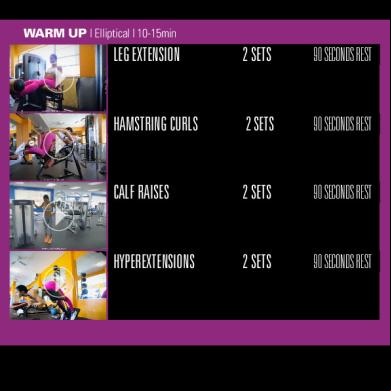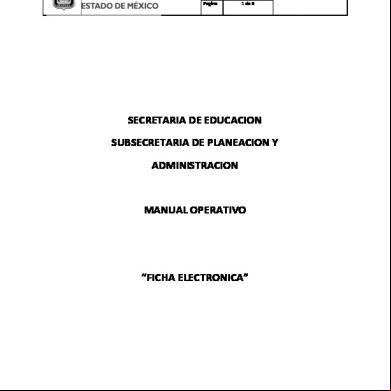Week 1 2p6c55
This document was ed by and they confirmed that they have the permission to share it. If you are author or own the copyright of this book, please report to us by using this report form. Report 2z6p3t
Overview 5o1f4z
& View Week 1 as PDF for free.
More details 6z3438
- Words: 1,132
- Pages: 20
BRIEF HISTORY AND NATURE OF DANCE Physical Education-3
Objectives: a. Discus the nature of dances b. Appreciate the origin of the different dances, c. Perform the fundamental step in dancing.
Picture Puzzle: Direction; Seat with your group Identify the picture given to your group within 5 seconds. Wait for the signal to start. First group to finish will earn 10 points for today
Journal Notebook: Fill up the Physical Activity Log. Physical activity that have done the previous week Age: Week No: Date: Day Monday Tuesday Wednesday
Thursday Friday Saturday Sunday
Section:
Activity
Duration
Notes
WHAT IS DANCE? Dance differs from athletics or other daily activities because it focuses primarily on “an aesthetic or even entertaining experience” It provided variety of functions throughout history due to its multidimensionality. People still dance mainly for four reason: (a) to please the Gods; (b) to please others; (c) to please themselves or selfexpression; and (d) to build community within an ethnic group or social interaction
BRIEF HISTORY AND NATURE OF DANCE The origins of dance are rooted in the prehistoric past Various artistic, religious and social forces started out the incorporation and development of dance. It was used as a way of expressing and reinforcing tribal unity and strength, as an approach for courtship and mating, and as a means of worship , communication and therapeutic experience.
The first use of dance was as a gesture in order to communicate
BENEFITS OF DANCE AND CREATIVE MOVEMENT Physical
• Develop cardiovascular and muscular endurance • Improves coordination, balance, flexibility and body composition • Lower risk of cardiovascular diseases • Lowers body mass index • Lowers resting heart rate • Improves lipid metabolism
• Enables t mobility • Helps improve and maintain bone density • Helps recover coordination and neuromuscular skills injury
Mental/ Emotional Helps keep the brain sharp Decrease incidence of dementia and Alzheimer’s disease Decrease depression symptoms Increase self- esteem and improves body image Aids in releasing emotional and physical tension
BENEFITS OF DANCE AND CREATIVE MOVEMENT Social
• Gives sense of togetherness within a group • Encourages positive social interaction and interpersonal relationship in a group • Contributes to the individual’s potential for self- actualization in society
Culture Promotes cultural values
Elements of Dance SPACE-this is the area the performers occupy and where they moves. Also known as spatial elements a. Direction- dance movements can travel in any direction. The performers can go forward, side, backward, diagonal, circular and so on. They may also face any direction while executing a single movement or several phrases. b. Size movements can be varied by doing larger or smaller actions c.
Level movements can be done in a high, medium or low level.
d. Focus performers may change their focus by looking at different directions.
Elements of Dance TIMING may be executed in varying tempo (speed).
Performers move with the tempo of an underlying sound, known as beat or pulse Can be varied by moving faster or slower than the normal beat.
Elements of Dance DANCE ENERGIES- the movements have propelled by energy or force . A force can either initiate or stop an action. a. Sustained- movements are done smoothly, continuously and with flow and control. It does not have a clear beginning and ending b. Percussive- movements are explosive or sharp in contrast with sustained movements. They are accented with thrust of energy. They have a clear beginning and ending. c.
Vibratory- movements consist of trembling or shaking. A faster version of percussive movements that produces a jittery effect
d. Swinging- movements trace a curved line or an arc in space. The movements are relaxed and giving in to gravity on the downward part of the motion, followed by an upward application of energy.
Elements of Dance DANCE ENERGIES a. Suspended- movements are perched in space or hanging on air. Holding a raised leg in any direction is an example of a suspended movement b. Collapsing- movements are released in tension and gradually or abruptly giving in to gravity, letting the body descend to the floor. A slow collapse can be described as a melting or oozing action in a downward direction.
Elements of Dance BODILY SHAPES- it refers to how the entire body is molded in space. The body can be rounded, angular or a combination of two. Other body shapes can be from wide to narrow and high to low. a. Symmetrical- balanced shape; movements are practically identical or similar on both sides
b. asymmetrical- unbalanced shape; movements of two sides of the body do not match or completely different from each other
PHILIPPINE FOLK DANCE • WHAT IS FOLK DANCE? • Are the indigenous dances of any specific”folk” or the common people.
• They are traditional customary or recreational dance forms of a given country which have evolved naturally and were handed down across generation • Are related to everything of importance in our daily lives, such as customs, rituals and occupation of a specific group of people
DIFFERENT TYPES OF PHILIPPINE FOLK DANCE 1. LIFE-CYCLE DANCES- dances that serve as ritual as one es to a different stage in life such as from birth to childhood to adulthood; from singlehood to marriage; and fr om life to death. (ex. Courtship, wedding and funeral dance) 2. FESTIVAL DANCES- dances that are either religious or secular and are connected with the celebration of reoccurring events of special significance.
DIFFERENT TYPES OF PHILIPPINE FOLK DANCE 3. OCCUPATIONAL DANCES- dances that depicts the means of livelihood of the Filipino people. (ex. Palay Dance)
4. RITUAL AND CEREMONIAL DANCE- dances performed as part of the rituals and ceremony ies of a certain tribe or group of people. 5. GAME DANCES- derivations from local folk games. (ex. Pukol Dance)
DIFFERENT TYPES OF PHILIPPINE FOLK DANCE 6. JOKE AND TRICKSTER DANCES- include jokes or tricks played by a dancer on another or a group of dancers who is one of them. 7. MIMETIC OR DRAMA DANCES- dance that mimic animals, inanimate objects or other people. (ex. Itik-itik dance) 8. WAR DANCE- dances that express feud and enmity wherein two male dancers engage in physical combat.
9. SOCIAL DANCES- dances that express social graces, hospitality and offerings of gifts to friends.
Activity:
FUNDAMENTAL STEPS IN DANCING
Activity: b. Timing- Gradually increase the tempo of your chosen movement and then slow it down. Using the same floor pattern, vary the tempo of the pattern at several points c. Energy- Perform your chosen movement using the six different dance energies
d. Bodily Shapes- try various shapes you can make with your body. Put some of the shapes you have discovered . Practice moving from one shape to another
Assignment: Bring the ff. 1.REVIEW ON THE DIFFERENT BASIC STEPS IN FOLK DANCE
Objectives: a. Discus the nature of dances b. Appreciate the origin of the different dances, c. Perform the fundamental step in dancing.
Picture Puzzle: Direction; Seat with your group Identify the picture given to your group within 5 seconds. Wait for the signal to start. First group to finish will earn 10 points for today
Journal Notebook: Fill up the Physical Activity Log. Physical activity that have done the previous week Age: Week No: Date: Day Monday Tuesday Wednesday
Thursday Friday Saturday Sunday
Section:
Activity
Duration
Notes
WHAT IS DANCE? Dance differs from athletics or other daily activities because it focuses primarily on “an aesthetic or even entertaining experience” It provided variety of functions throughout history due to its multidimensionality. People still dance mainly for four reason: (a) to please the Gods; (b) to please others; (c) to please themselves or selfexpression; and (d) to build community within an ethnic group or social interaction
BRIEF HISTORY AND NATURE OF DANCE The origins of dance are rooted in the prehistoric past Various artistic, religious and social forces started out the incorporation and development of dance. It was used as a way of expressing and reinforcing tribal unity and strength, as an approach for courtship and mating, and as a means of worship , communication and therapeutic experience.
The first use of dance was as a gesture in order to communicate
BENEFITS OF DANCE AND CREATIVE MOVEMENT Physical
• Develop cardiovascular and muscular endurance • Improves coordination, balance, flexibility and body composition • Lower risk of cardiovascular diseases • Lowers body mass index • Lowers resting heart rate • Improves lipid metabolism
• Enables t mobility • Helps improve and maintain bone density • Helps recover coordination and neuromuscular skills injury
Mental/ Emotional Helps keep the brain sharp Decrease incidence of dementia and Alzheimer’s disease Decrease depression symptoms Increase self- esteem and improves body image Aids in releasing emotional and physical tension
BENEFITS OF DANCE AND CREATIVE MOVEMENT Social
• Gives sense of togetherness within a group • Encourages positive social interaction and interpersonal relationship in a group • Contributes to the individual’s potential for self- actualization in society
Culture Promotes cultural values
Elements of Dance SPACE-this is the area the performers occupy and where they moves. Also known as spatial elements a. Direction- dance movements can travel in any direction. The performers can go forward, side, backward, diagonal, circular and so on. They may also face any direction while executing a single movement or several phrases. b. Size movements can be varied by doing larger or smaller actions c.
Level movements can be done in a high, medium or low level.
d. Focus performers may change their focus by looking at different directions.
Elements of Dance TIMING may be executed in varying tempo (speed).
Performers move with the tempo of an underlying sound, known as beat or pulse Can be varied by moving faster or slower than the normal beat.
Elements of Dance DANCE ENERGIES- the movements have propelled by energy or force . A force can either initiate or stop an action. a. Sustained- movements are done smoothly, continuously and with flow and control. It does not have a clear beginning and ending b. Percussive- movements are explosive or sharp in contrast with sustained movements. They are accented with thrust of energy. They have a clear beginning and ending. c.
Vibratory- movements consist of trembling or shaking. A faster version of percussive movements that produces a jittery effect
d. Swinging- movements trace a curved line or an arc in space. The movements are relaxed and giving in to gravity on the downward part of the motion, followed by an upward application of energy.
Elements of Dance DANCE ENERGIES a. Suspended- movements are perched in space or hanging on air. Holding a raised leg in any direction is an example of a suspended movement b. Collapsing- movements are released in tension and gradually or abruptly giving in to gravity, letting the body descend to the floor. A slow collapse can be described as a melting or oozing action in a downward direction.
Elements of Dance BODILY SHAPES- it refers to how the entire body is molded in space. The body can be rounded, angular or a combination of two. Other body shapes can be from wide to narrow and high to low. a. Symmetrical- balanced shape; movements are practically identical or similar on both sides
b. asymmetrical- unbalanced shape; movements of two sides of the body do not match or completely different from each other
PHILIPPINE FOLK DANCE • WHAT IS FOLK DANCE? • Are the indigenous dances of any specific”folk” or the common people.
• They are traditional customary or recreational dance forms of a given country which have evolved naturally and were handed down across generation • Are related to everything of importance in our daily lives, such as customs, rituals and occupation of a specific group of people
DIFFERENT TYPES OF PHILIPPINE FOLK DANCE 1. LIFE-CYCLE DANCES- dances that serve as ritual as one es to a different stage in life such as from birth to childhood to adulthood; from singlehood to marriage; and fr om life to death. (ex. Courtship, wedding and funeral dance) 2. FESTIVAL DANCES- dances that are either religious or secular and are connected with the celebration of reoccurring events of special significance.
DIFFERENT TYPES OF PHILIPPINE FOLK DANCE 3. OCCUPATIONAL DANCES- dances that depicts the means of livelihood of the Filipino people. (ex. Palay Dance)
4. RITUAL AND CEREMONIAL DANCE- dances performed as part of the rituals and ceremony ies of a certain tribe or group of people. 5. GAME DANCES- derivations from local folk games. (ex. Pukol Dance)
DIFFERENT TYPES OF PHILIPPINE FOLK DANCE 6. JOKE AND TRICKSTER DANCES- include jokes or tricks played by a dancer on another or a group of dancers who is one of them. 7. MIMETIC OR DRAMA DANCES- dance that mimic animals, inanimate objects or other people. (ex. Itik-itik dance) 8. WAR DANCE- dances that express feud and enmity wherein two male dancers engage in physical combat.
9. SOCIAL DANCES- dances that express social graces, hospitality and offerings of gifts to friends.
Activity:
FUNDAMENTAL STEPS IN DANCING
Activity: b. Timing- Gradually increase the tempo of your chosen movement and then slow it down. Using the same floor pattern, vary the tempo of the pattern at several points c. Energy- Perform your chosen movement using the six different dance energies
d. Bodily Shapes- try various shapes you can make with your body. Put some of the shapes you have discovered . Practice moving from one shape to another
Assignment: Bring the ff. 1.REVIEW ON THE DIFFERENT BASIC STEPS IN FOLK DANCE










